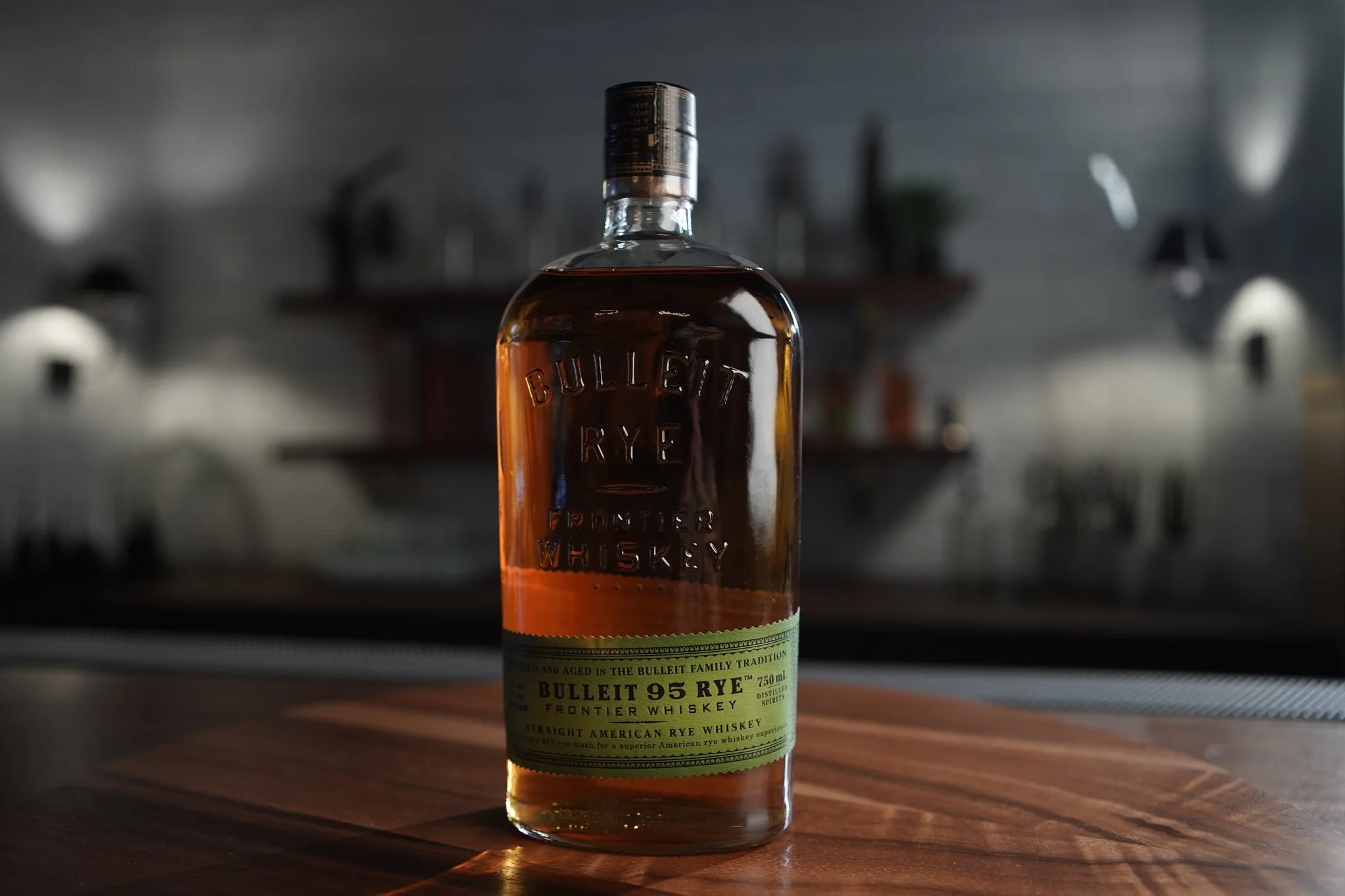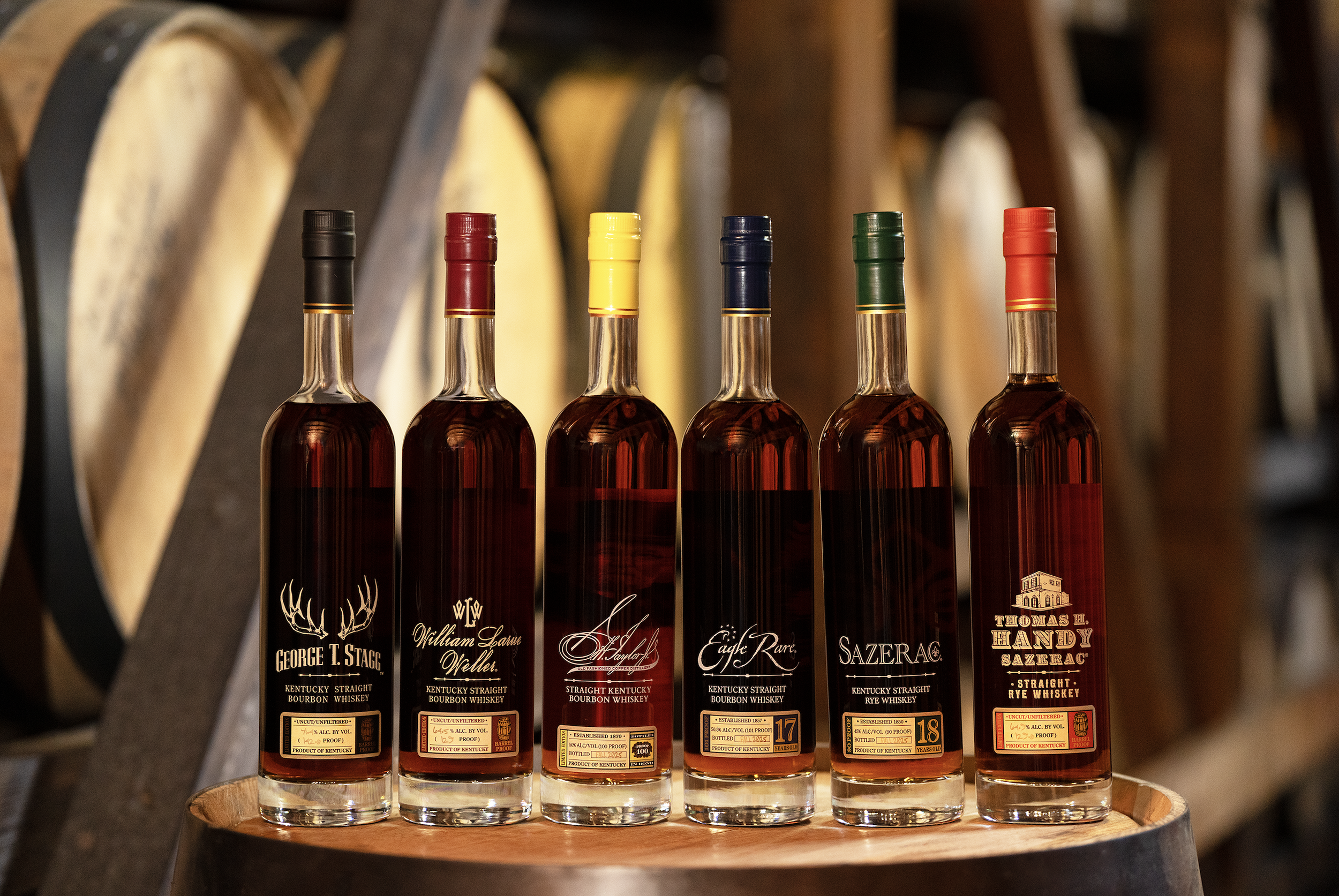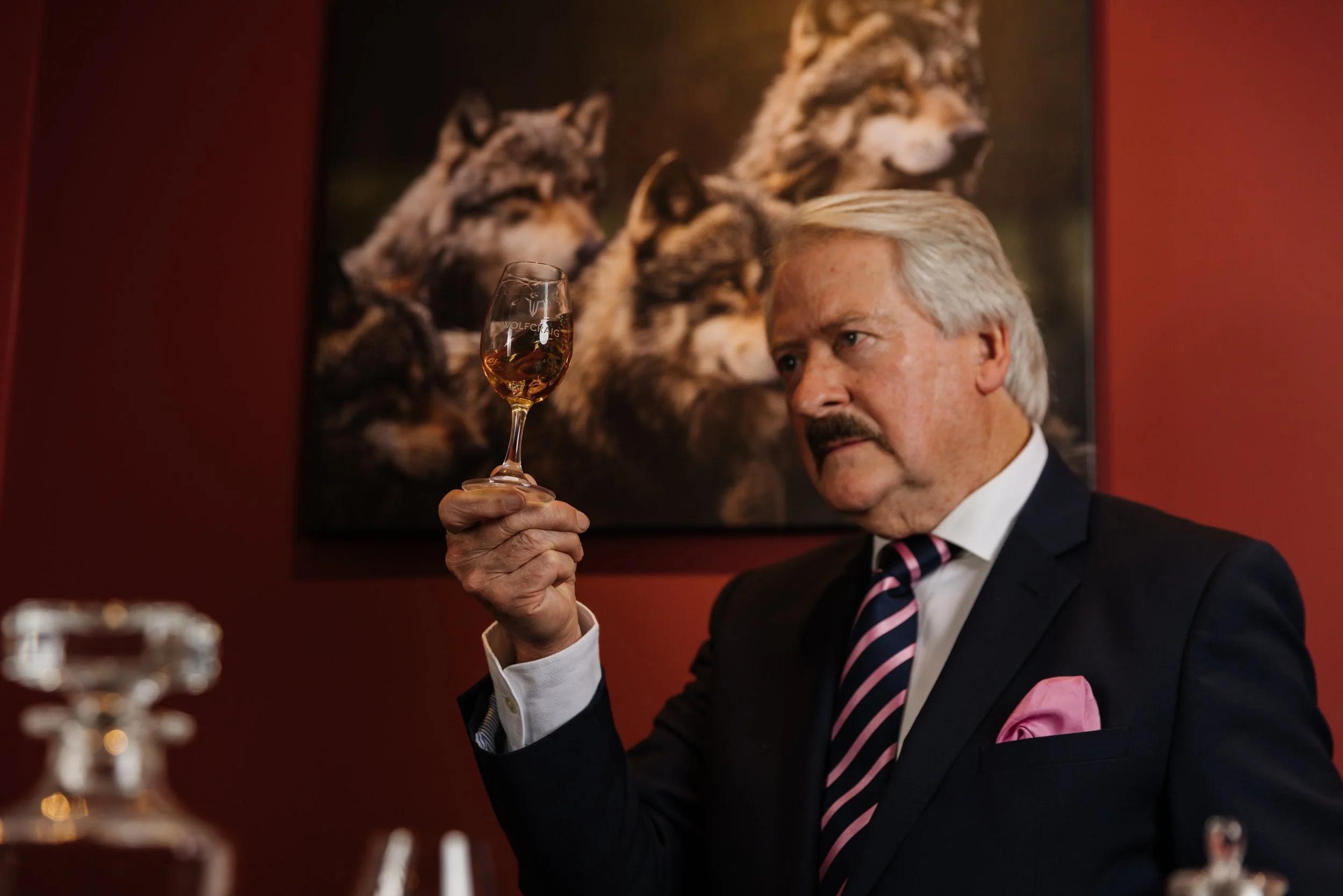Battle of the grains!
Barley, claims distiller Peter Mulryan, is merely the workhorse of the whisky world. Fighting talk, you might say. So let the battle of the grains commence!
It’s the mid 90’s and for a whole afternoon I’m at a loose end in San Francisco. There’s no internet, let alone Google and I’m in search of an illusive whisky I’ve been told I must try. I hit a few bars, then a few more, until in the dimness of a plush hotel I spot my quarry – a whisky made not from malted barley, but 100% malted rye. It was one of the first bottles of Old Potrero.
I still remember my nostrils tingle as I swirled and sniffed, pretending I knew what I was doing, though it quickly became apparent I did not when I took a swig and it exploded out my nose. It was quite possibly the most disgusting whisky I had ever tasted. If barley is the beating heart of a whisky, then I had licked the sweaty armpit.
‘I swirled and sniffed, pretending I knew what I was doing, though it quickly became apparent I did not when I took a swig and it exploded out my nose.’
I tell you all this because what I call embarrassing, is what annoying American’s now call ‘a learning moment’. For this was the ‘moment’ my whisky horizons detonated. It wasn’t that I didn’t like rye, rather it just wasn’t what I was expecting, like downing a mouthful of milk thinking it’s fizzy orange. When I recovered my composure and had a second sip, I was hooked. I knew the boundaries of what was possible in whisky were endless.
Strangely, people who have a hard time getting their heads around the world of non-malt whiskies, have no problem understanding how bread works. You use white flour, you get white bread. Add wholemeal flour and the bread gets darker and darker, until you end up with something inedible vegans eat. Mix the grains you have Granary bread, put in rye flour and you get rye bread. If beer is liquid bread, then whisky is its spiritual cousin. If you change your inputs, you change the output – so let’s do that.
‘Making single malt whisky is easy, that’s why the Scots do it’
This grain is the workhorse of the whisky world, books have been written about barley and its butterfly transformation when malted. Malt is barley that maltsters wet, tricking it into thinking it’s going to grow into a field of swaying golden grain. Malting barley is the critical step in sparking enzymes in the grain to life. These enzymes are the catalyst for converting grain starches into complex and simple sugar chains which are in turn fed to voracious yeast babies from space. All yeast does is have sex and fart carbon dioxide. The by-product to all this debauchery is, of course, alcohol and without alcohol, language and iPhones, would we even be human?
Most malt is dried and the drying process impacts on flavour: a closed kiln which delivers only heat, gives you sweet and biscuity goodness; an open kiln fired by peat, gives you smoky turf briquettes. Although almost everyone uses the term ‘malt’ to describe malted barley, it is of course possible to malt any cereal.
‘All yeast does is have sex and fart carbon dioxide.’
So making Single Malt whisky is simple, that’s why the Scots do it. All malt wants to do is convert, which is why things get tricky as the percentage of malt used decreases. In Ireland the whiskey mash bill has traditionally been bulked out with other grains, principally raw barley. Barley brings a bit of spice and sass to the mix. It also adds orchard fruits like apple and pear, a touch of pleasant sour crunch, and a very viscous tooth. Barley gives the whisky weight, depth, and a taste profile unique to pot still whisky. But as raw barley clearly hasn’t been malted, added enzymes are needed to get a decent yield, but that’s something we distillers don’t like to talk about.
Barley and malted barley are the same grain, yet dialling up one and dialling down the other has a huge impact on flavour. Taste a classic Green Spot single pot still Irish whiskey next to, say, any unpeated single malt to feel the impact of unmalted barley.
Whisky has to be made from cereal grain, that is, a member of the extended grass family, but barley isn’t the only show in town. So let’s meet the main contenders in the great grain challenge.
King Corn: It made American fat - and Bourbon great
Anglo-Irish whiskies have an odd relationship with corn. It’s everywhere, yet it’s nowhere. It’s the mad cousin in the attic that everybody knows about, nobody talks about and who never gets invited to tea.
Perhaps because in Ireland and Scotland corn is mostly used to make grain whisky, in plants that use continuous stills and look like oil refineries, while malt hangs out with the Instagram-friendly copper pots and distillery cat.
A mash bill for a typical grain whisky can contain 85% or more corn, the rest being malted barley. Grain whisky is mostly blended with malt and sold as Blended Scotch or Irish, and these categories account for around 90% of all sales of Scotch and Irish whiskey. Forget the attic, corn is hiding in plain sight and you know what they say, 60% of the time that works every time.
‘Corn is the mad cousin in the attic that everybody knows about, nobody talks about and who never gets invited to tea’
Cross the Atlantic however and it’s quite a different story. When you have a 51% + corn whisky you get that most American of spirits - Bourbon. Corn is native to the continent, it was cultivated by the indigenous tribes long before Europeans arrived. Now corn literally shapes America, from the waistlines of its inhabitants, to fields the size of a small European country: corn is king.
To be fair, commercial corn doesn’t make the most complex of whiskies, but what it lacks in nuance this big fat American grass makes up for in yield. Corn is easy to grow and it doesn’t take much malt to convert a lot of starch to a lot of sugar. Corn is what gives most bourbons (or Tennessee Whiskies) their spine, as most brands are made from a mixed mash bill of corn, with the addition of malt and rye. Wild Turkey is 75% corn, for example, while George Dickel is 84%.
The bustling craft industry has really put corn at the centre of its output, whether it’s using heritage varieties of corn, like New Liberty’s Bloody Butcher Bourbon, or Balcones 100% Texas Blue Corn Bourbon. You get big bold flavours from a big bold grass, in a big bold country.
PETER’S PICKS: Single Grain whisky is still a niche product, but Nikka Coffey Grain is iconic and Kilbeggan Single Grain is good value. There is no shortage of American bourbons, however King’s County Straight Bourbon made with local New York corn is really delicious.
Raucous, rebellious Rye - the punkiest grain in town
Rye is where I joined the alt-grain whisky party, it’s the noisiest guest in the room, the one with pink hair in the sequined jump-suit. Rye brings a load of spice and fire to play on the tongue, it adds a peppery spice, with a feisty dark plum bass note; it cannot be mistaken for any other grain.
Blackwater valley, Ireland
Unmalted rye tends to lend a slight mustiness on the nose, something to look for when drinking American Rye Whiskies. If it’s a little musty, it’s unmalted. If there’s no mustiness, either a negligible amount has been used, or the rye was malted. Nothing wrong with malting the rye - rye is a bastard to work with when it’s unmalted and you can almost smell the distiller’s angst in high rye distillates. I think that’s what makes it taste so good. Like drinking tears from a bottle full of curses.
‘Rye is the noisiest guest in the room, the one with pink hair in the sequined jump-suit’
But there’s nothing new about rye whisky. There are records of rye being used in America as far back as the 17th century. Before prohibition Rye was the American whisky in the USA especially in Pennsylvania and Maryland. In Ireland, rye was common in pot still whiskies and for centuries it was used as salt is today on a boiled egg.
When the brewing historian Alfred Barnard visited Port Dundas in Scotland during his famous tour of the country’s distilleries in the 1890s, he noted that its two granaries contained ‘14,000 quarters of barley and rye’. But as anyone in a sequined jump-suit will tell you, fashion is a fickle mistress. So the only remarkable thing is why it’s taken so long for the particular grain to come back into vogue.
But boy is it back! Craft American Rye whiskies are quite the thing, while over here the Germans, the Dutch, the Danes and the Finns all produce fine examples of the genre. Arbikie in Scotland and Oxford distillery in England have long championed the category and now Big Whisky PLC has started to play in a category carved out by the independents; within weeks of each other Pernod Ricard launched Power’s Irish Rye, while Bruichladdich announced an Islay Rye.
PETER’S PICKS: Bulleit Rye is easy to find and good value, at the craft end Sagamore is a super Maryland style Rye.
Oats are like a gyrating Prince busting his moves in a burlesque show
For far too long, oats have been ignored, fit only for a distiller’s breakfast, which is a real shame.
Quite simply oats are Ireland’s gift to the whiskey world, but have been written out of history by those who would try and control the industry. Across two and a half centuries of distilling history, from the dodgy records of the 18th century until the Irish whiskey industry fell into monopoly in the late 1960’s, oats are the constant ‘other grain’ – the ying to barley’s yang, they usually accounted for between 15% - 30% of an Irish whiskey mash bill. In the Victorian period, during the first golden age of Irish whiskey, oats are what make Irish the most popular whiskey in the world.
When it comes to whisky, oats are all about texture and mouth-feel. Think a lingering velvet hug, or Prince gyrating, all high-pitched screams, around this luscious grain. Oats add chewy sweetness to a whisky, and help smooth out barley’s spicy dance moves. It’s a burlesque show of creamy goodness.
PETER’S PICK: Koval’s Single Barrel Oat whisky is a wonder.
Watch out for wheat, it’s the Marmite of whiskey grains
Wheat makes lovely bread and sensational scones, but when distilled I’ll admit I’m not a huge fan. There’s a certain grassy note I like, but a dryness that’s a bit Marmite. After all, a field of wheat is just a lawn with attitude, so not surprisingly it adds a dose of sliced bread or cream cracker and a touch of vanilla spice and… well… grass. Wheat can work when it serves as a complementary agent to sweeter grains like malted barley. Kind of like how mushrooms compliment a hearty stew.
Nowadays wheat whiskey is not very common (though some distilleries do use it in their continuous stills) but in the early 1800’s before the Irish famine, it was a sizeable and important component in batch produced Irish whiskey.
PETER’S PICK: Haig Club Single Grain is made from 90% wheat, so worth a shot.
Woodford Reserve also has a 52% wheat wheat whisky, the rest of the mash being corn (20%), malt (20%) and rye (8%). And that’s mostly how these alt-grains were historically used, as adjuncts. My own Blackwater Distillery recently released a limited ‘Manifesto’ pack of four historic mixed mash bills featuring all the most common alt-grains.
Stick with single malt if you want, but I promise you are missing out on a whole world of flavour. Grain is the new frontier.
Peter Mulryan is the co-founder of Blackwater Distillery in Ireland











